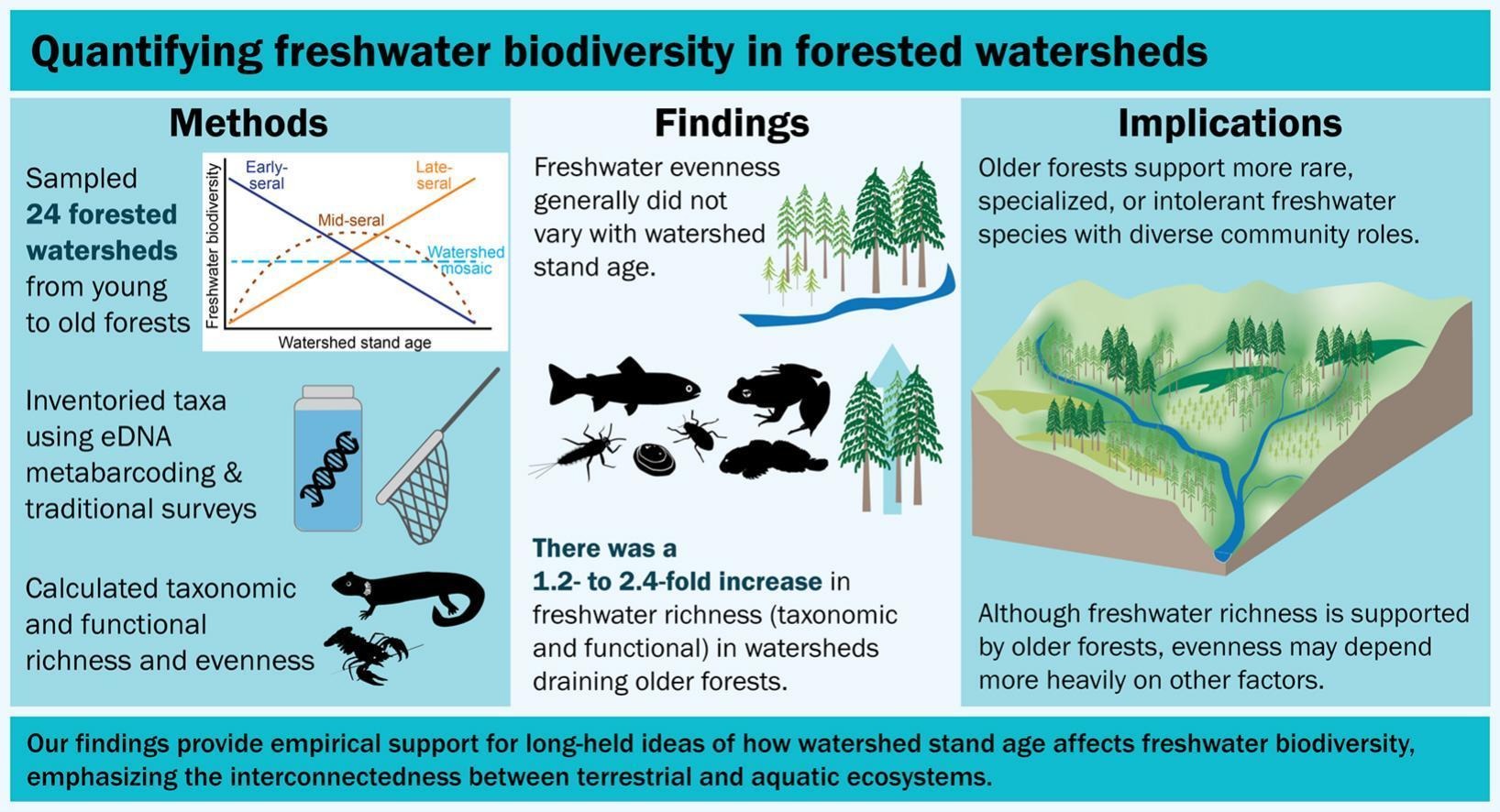Forest age influences freshwater biodiversity in temperate watersheds
https://doi.org/10.1016/j.biocon.2025.111530
Biological Conservation January 2026
Authors
Brooke E. Penaluna, U.S. Department of Agriculture, Forest Service, Pacific Northwest Research Station
Ashley A. Coble, National Council for Air and Stream Improvement, Inc.
Arif Jan, Department of Fisheries, Wildlife, and Conservation Sciences, Oregon State University
Richard Cronn, U.S. Department of Agriculture, Forest Service, Pacific Northwest Research Station
Laura L. Hauck, U.S. Department of Agriculture, Forest Service, Pacific Northwest Research Station
Ivan Arismendi, Department of Fisheries, Wildlife, and Conservation Sciences, Oregon State University
Jessica Homyack, Weyerhaeuser
Abstract
Forests can affect stream structure and function, but evaluations linking freshwater biodiversity to watershed-scale forest-stand conditions are limited. We evaluated competing hypotheses about spatial patterns of freshwater biodiversity by combining species inventories of vertebrates and invertebrates from traditional and environmental DNA (eDNA) methods across 24 temperate watersheds of young to old forests (37 to 124 y old). Freshwater taxonomic and functional richness of invertebrates were, on average, 1.2-fold and 1.5-fold higher, respectively, in older forests (>75 y) than in younger forests, consistent with the late-seral hypothesis. Vertebrate taxonomic and functional richness were 1.6-fold and 2.4-fold higher, respectively, in older forests, marginally supporting the late-seral hypothesis. Collectively, these findings suggest that heterogeneous habitat conditions of older forests support more rare, specialized, or intolerant freshwater species with diverse community roles. Evenness generally did not vary with mean watershed stand age, thus the diversity of habitats within a watershed may be shaped by other factors, such as disturbance history, watershed characteristics, and landscape heterogeneity. However, as measured by traditional sampling, invertebrate taxonomic evenness declined with increasing mean watershed stand age, slightly supporting the early-seral hypothesis, as younger forests may promote more evenly distributed assemblages. Ultimately, although greater freshwater richness is supported by older forests, evenness may depend more heavily on other factors in forested watersheds. Our findings provide empirical support for long-held ideas about the tight relationship between forests and freshwater biodiversity, emphasizing the interconnectedness between terrestrial and aquatic ecosystems and the importance of considering forests in watershed-scale conservation.
Keywords: Amphibians, Early-seral, eDNA, Fish, Invertebrates, Late-seral, Mid-seral
